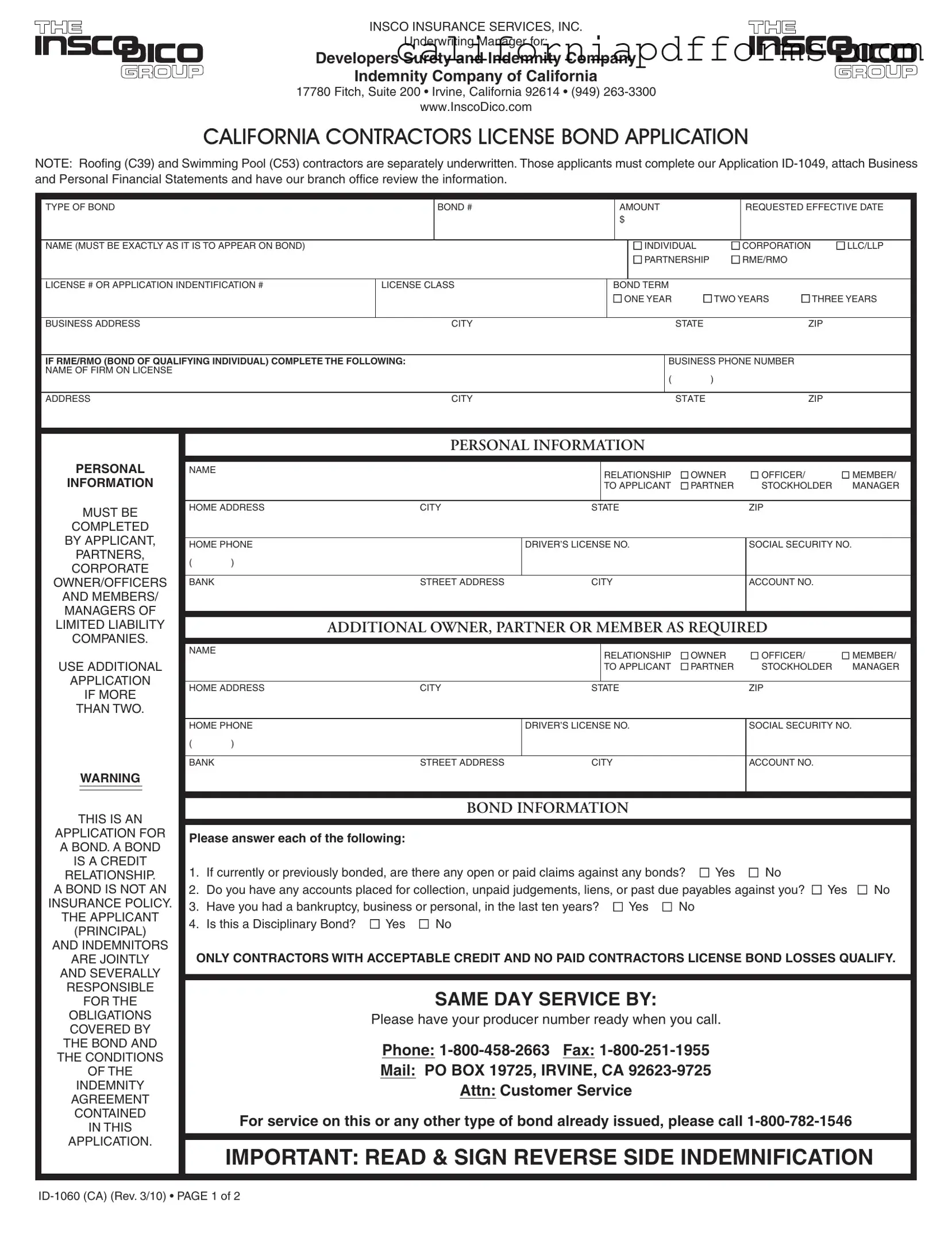Download California Id 1060 Form
The California ID 1060 form is a crucial document for contractors seeking a license bond in California. This application not only outlines the necessary information about the contractor but also establishes a credit relationship with the surety company. If you're ready to take the next step in securing your bond, fill out the form by clicking the button below.
Open Your Form Online
